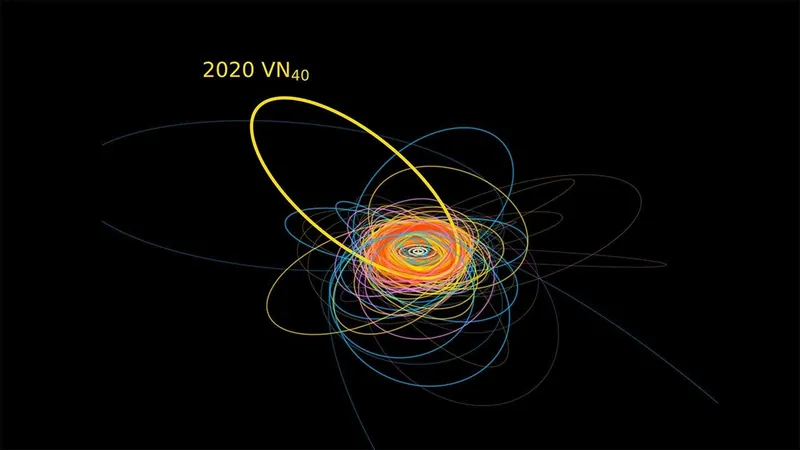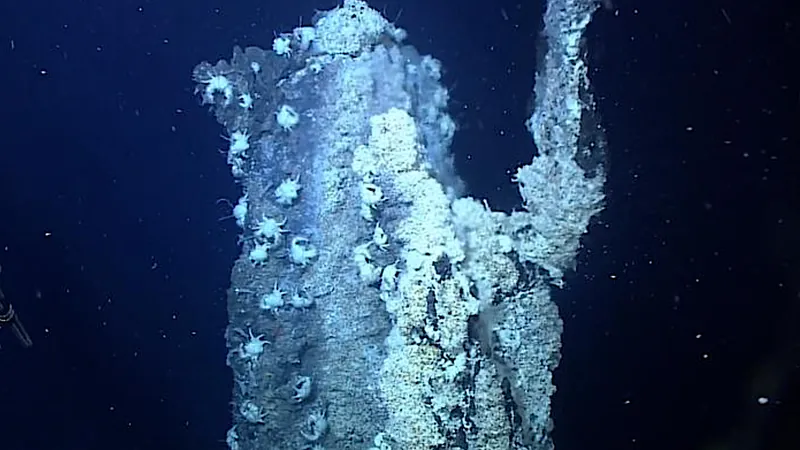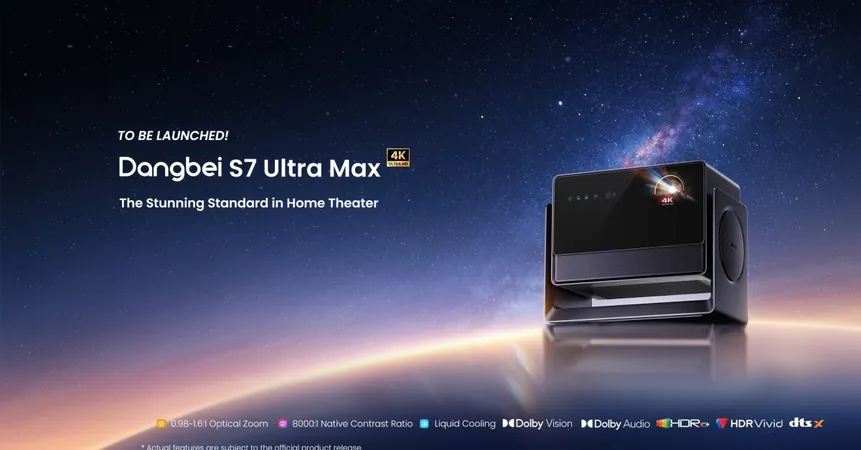
Mysterious Cosmic Dance: New Object Discovered Beyond Neptune
2025-07-24
Author: Emily
Astronomers Uncover a New Cosmic Mystery
In a thrilling development for space enthusiasts, astronomers have discovered a rare celestial object beyond Neptune that appears to be 'dancing' in sync with the eighth planet. This enigmatic entity, named 2020 VN40, was initially identified in 2020, and takes an astonishing 1,655 Earth-years to complete a single orbit around the sun. This revelation comes on the heels of another recent find, 2023 KQ14, affectionately dubbed 'Ammonite,' which lies even farther than Pluto.
What Makes 2020 VN40 So Fascinating?
Published in the American Astronomical Society’s *The Planetary Science Journal*, the discovery of 2020 VN40 supports a groundbreaking theory: many distant objects are captured by Neptune’s immense gravity as they drift through the far reaches of the solar system. Lead researcher Rosemary Pike from the Center for Astrophysics notes, "This is a significant leap in our understanding of the outer solar system. It suggests that even the most remote regions influenced by Neptune harbor intriguing objects, offering fresh insights into the solar system's evolution."
Co-author Ruth Murray-Clay compares this new find to uncovering a hidden rhythm in a familiar song, stating, "It could revolutionize our understanding of how distant celestial bodies interact and move."
The Journey to Discovery
The journey to identifying 2020 VN40 was no small feat. It took astronomers six years to map its elusive orbit. Researchers utilized the Large Inclination Distant Objects survey, which specializes in locating peculiar objects in the outer solar system—an area that remains relatively unexplored. Utilizing advanced telescopes, including the Canada-France-Hawaii Telescope and Gemini facilities, the survey has cataloged over 140 distant celestial objects to date.
A New Age of Discovery on the Horizon
Excitingly, the upcoming Vera C. Rubin Observatory in Chile has begun to capture breathtaking images of the cosmos and is expected to unveil a plethora of new findings about the solar system. Kathryn Volk from the Planetary Science Institute anticipates that with the launch of the Rubin Observatory’s Legacy Survey of Space and Time, we will witness an influx of discoveries, further illuminating the solar system's history, including potential interstellar wanderers.
Meet 'Ammonite': A Potential Game-Changer in Astronomy
Adding to the excitement, another newly discovered object—2023 KQ14, or 'Ammonite'—is also expected to transform our understanding of the solar system. Resembling Sedna, a candidate for dwarf planet status identified in 2003, Ammonite orbits beyond Neptune with a highly eccentric trajectory. Estimated to measure between 137 and 236 miles in diameter, it resides between 70 and 432 times farther from the sun than Earth.









 Brasil (PT)
Brasil (PT)
 Canada (EN)
Canada (EN)
 Chile (ES)
Chile (ES)
 Česko (CS)
Česko (CS)
 대한민국 (KO)
대한민국 (KO)
 España (ES)
España (ES)
 France (FR)
France (FR)
 Hong Kong (EN)
Hong Kong (EN)
 Italia (IT)
Italia (IT)
 日本 (JA)
日本 (JA)
 Magyarország (HU)
Magyarország (HU)
 Norge (NO)
Norge (NO)
 Polska (PL)
Polska (PL)
 Schweiz (DE)
Schweiz (DE)
 Singapore (EN)
Singapore (EN)
 Sverige (SV)
Sverige (SV)
 Suomi (FI)
Suomi (FI)
 Türkiye (TR)
Türkiye (TR)
 الإمارات العربية المتحدة (AR)
الإمارات العربية المتحدة (AR)